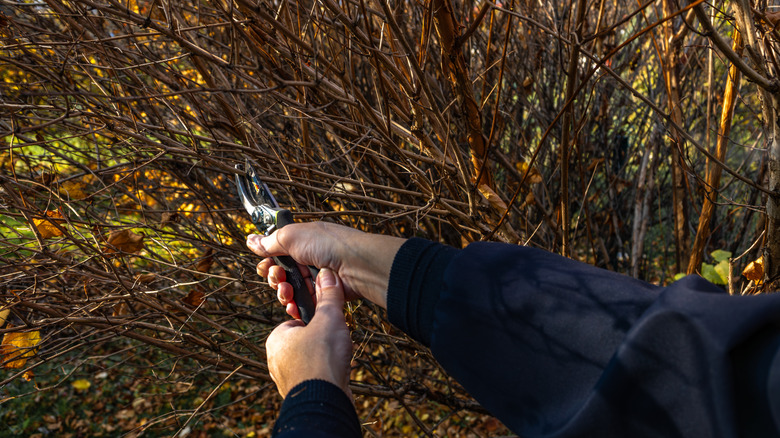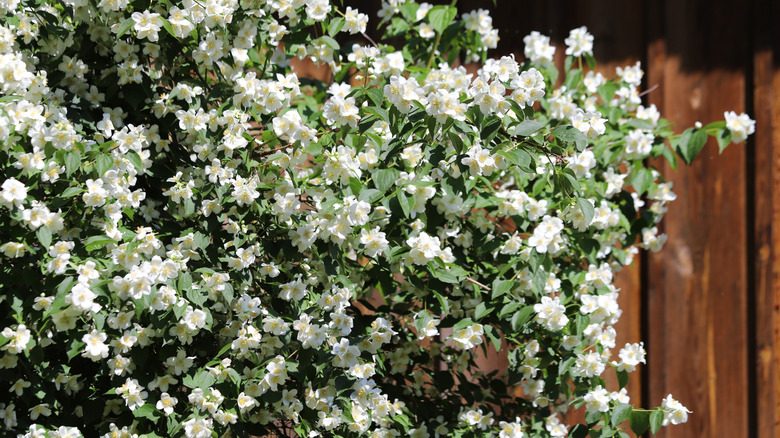Pruning This Plant In October Will Rob You Of Stunning Flowers Next Summer
Many gardeners' fall to-do lists get packed with tasks like harvesting, pruning, mulching, and winterizing perennials. There's often enough pruning in particular that it can be a relief that some plants should never be snipped in fall. For example, if a mock orange (Philadelphus spp.) is part of your landscape, leave it off the pruning list. Mock orange shrubs need to hold onto their structure from fall until spring in order to bloom next summer. This spring- or summer-blooming plant produces blossoms on last year's wood, so an ill-timed trimming will leave you without your mock orange shrub's floral glory for the upcoming summer.
Mock orange blossoms smell surprisingly similar to those of a real orange tree, but in order for its flowers to make your yard smell amazing, the plant needs to hold onto the wood it grew over the summer. This is the stuff that already holds next year's buds. Mock orange plants' summer blossoms appear on branches that grew during the prior summer, and it's far too easy to trim away the very buds you can't wait to enjoy in the near future. Be smart and wait, because it's not just the nearby people who'll miss out: Mock oranges are invaluable food sources for pollinators and songbirds, and you don't want to miss out on them, either!
Properly timed pruning will ensure your mock orange thrives
Mock orange is known for being low maintenance, so don't jeopardize its most desirable aspects by subjecting it to the snippers this October. The Old Farmer's Almanac shares that mock oranges should bloom whether or not you prune them, but well-planned pruning can control their growth and lead to the overall health and performance of your shrub.
A good rule of thumb is to prune your mock orange shrub no later than July, saving the cutting for after its floral show ends for the year around early summer. After most of the blooms have faded, clean and disinfect the gardening tools you use for trimming, then cut away wood on branches with spent flowers. You want to cut off between ⅓ and ⅔ of the branch, though you can trim old or dead wood completely to the ground.
If your mock orange looks overly woody, it may be in need of a serious revitalization. To do this, trim as much as ⅓ of the plant away once the flowers have died back, starting with the oldest sections. Prune the shrub this way for three summers so that, at the end of the third year, your plant doesn't consist of any wood over three years old.

